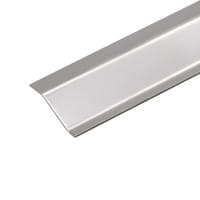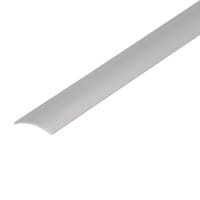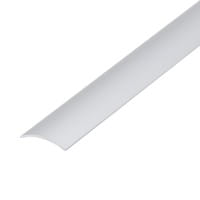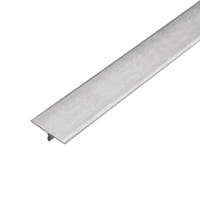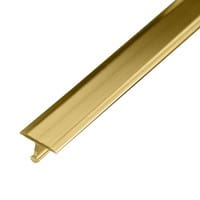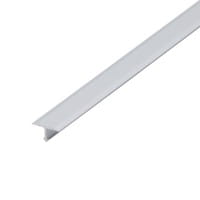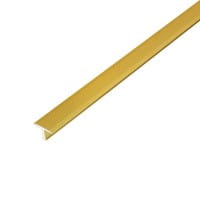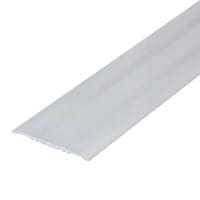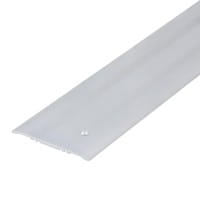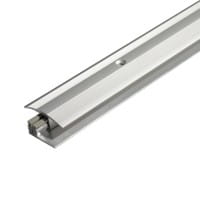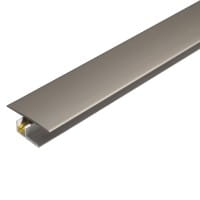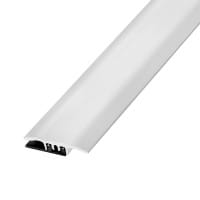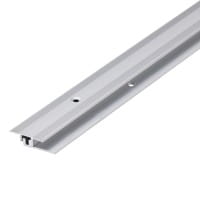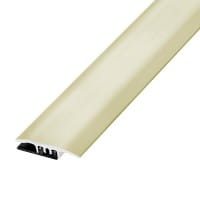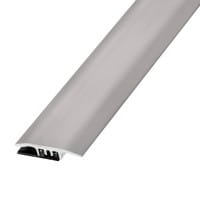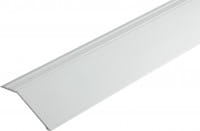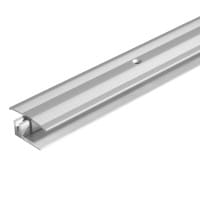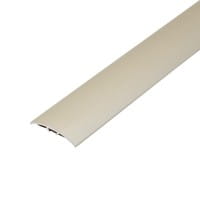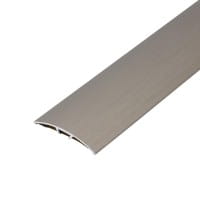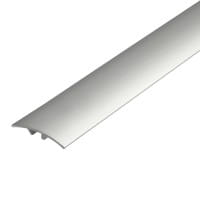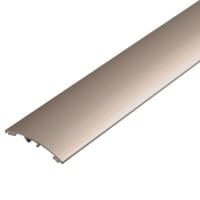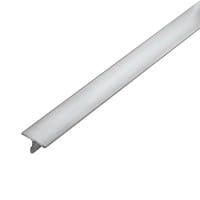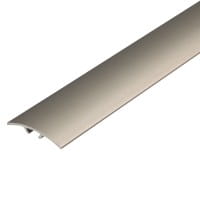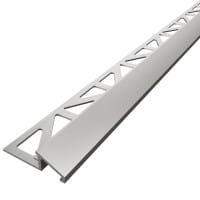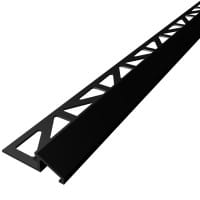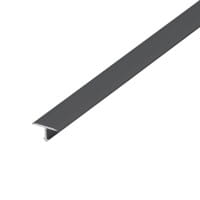Transition profiles - For a seamless transition between different floor coverings
What are transition profiles suitable for?

Transition or transfer profiles are suitable for transitions between doors and almost any floor covering, whether tiles, carpet, laminate or vinyl. You do not have to sacrifice durability or visual appeal. Transition profiles are tile profile, used to create a seamless connection between two different floor coverings that meet. Typically, transition profiles are installed between two types of flooring such as wood and tile, carpet and tile, or laminate and carpet.
There are several advantages to using transition profiles. The profile provides an aesthetically pleasing solution for bridging transitions between different floor coverings. In addition to their aesthetic benefits, transition profiles can also help protect the edges of floor coverings from wear or damage. Further, they prevent tripping hazards by creating a flat, smooth surface that provides a safe and comfortable walking surface. Transition profiles are indispensable in the design of floors and allow effortless and effective connection between different floor coverings. Thus, they represent a significant component in creating a harmonious overall appearance. It is important that the transition profile is not only functional, but also aesthetically pleasing. After all, it should not only connect the various floor coverings with each other, but also form a visual unit.
Transition profiles can be made of various materials, such as aluminium, stainless steel, brass or plastic. They are available in different designs and colors to meet different requirements and needs.
Transition profiles in our assortment
We have different transition profiles in our assortment. We roughly divide into T-shaped transition profiles, flat transition profiles and multi-transition profiles. Whether self-adhesive or with screw fastening, we have a wide range of products for every construction situation.
We offer transition profiles in the following materials:
- Aluminium
- Stainless steel
- Brass
Multi-transition profiles

These profiles usually consist of a 2- or 3-part profile system with a screwable top profile, a plastic hinge or clip and a basic profile. They are suitable for terminations of laminate and parquet to adjacent coverings, for expansion joints, as transition profiles and for wall connections. By means of a plastic hinge, the top profile, is connected to the basic profile fixed to the floor in such a way that there is a continuous movement both in height and in inclination. Thus, the profile can always adapt to the respective surface without annoying readjustment. In our store you have a wide selection of Mulit transition profiles, which are suitable for different covering heights. The profiles are suitable for covering heights of 7-17 mm. We have these transition profiles for simple click mounting or with screw mounting e.g. the Multi-transition profile aluminium silver.
You can choose between the colors silver, champagne, titanium.
Transition profiles T-shape
You can choose from three materials stainless steel, aluminium and brass with a width of 14 and 25 mm. These transfer profiles are also ideal for separating or connecting two different floor coverings where there are no or only marginal differences in height. Due to their shape, they allow easy installation, without the need for special tools. Therefore, for example, the T-shaped transition profile aluminium silver is also particularly suitable for retrofitting.
Brass T-profiles withstand heavy loads and the material oxidizes in the air, especially in high humidity. The visible surface is covered with patina (oxide layer) over time and thus changes its appearance.
A wide range of colors awaits you in the case of T-profiles. At aluminium you can choose between silver, gold, titanium and at stainless steel between natural, polished and brushed surface. For brass you can expect a chrome-plated or polished profile.
Flat transition profiles
Classic flat transition profiles are often used under doors or for visual room separation. With these profiles, you can choose whether you prefer to glue them or screw them - This makes the installation of these strips particularly easy.
Cover profiles (e.g. the Cover profile FLEX aluminium silver self-adhesive) also belong to the flat transition profiles and can be retrofitted to wall and floor and bridge wide joints or cracks. The tile profile is available in self-adhesive, drilled on one side and without drilling. The visible width of the cover profile can be selected from 60 - 120 mm, whereby it should be noted that the 60 mm strips have a narrow, smooth surface and the wider variants have a ribbed, profiled surface. Here you also have the choice between silver anodized and natural, untreated surface. The tile profile also reduces impact and structure-borne sound transmission.
Application transition profiles (T-shape)

Due to their T-shape, they can be installed subsequently without any problems. The use of tools will not be necessary. They are simply pressed into a joint filled with silicone, the different substrates do not matter. The T-profiles connect ceramics and parquet, natural stone, concrete and/or laminate. The edges are covered to such an extent that the edge areas of the covering cannot be damaged.
Profiles made of aluminium can be used where no unusual chemical reactions are expected. To avoid corrosion, careful handling of cement materials is mandatory. As the name suggests, anodized aluminium is particularly refined, in fact, the surface should not change as a rule. However, the visible surfaces must also be protected against cement materials. Damage can be caused by scratching or grinding objects on the surface.
stainless steel are particularly suitable for areas exposed to high levels of chemicals and acids. They also meet the highest mechanical requirements. Stainless steel profiles are used, for example, in the food industry, hospitals, swimming pools and restaurants.
Processing
- Clean the joint chamber.
- Then fill the joint chamber with one-component silicone.
- Press T-profiles into the joint until it is completely resting on the floor coverings.
- Remove silicone that is oozing out from under the edges with cleaning agents.

